Stories > 50 For 50
50 For 50
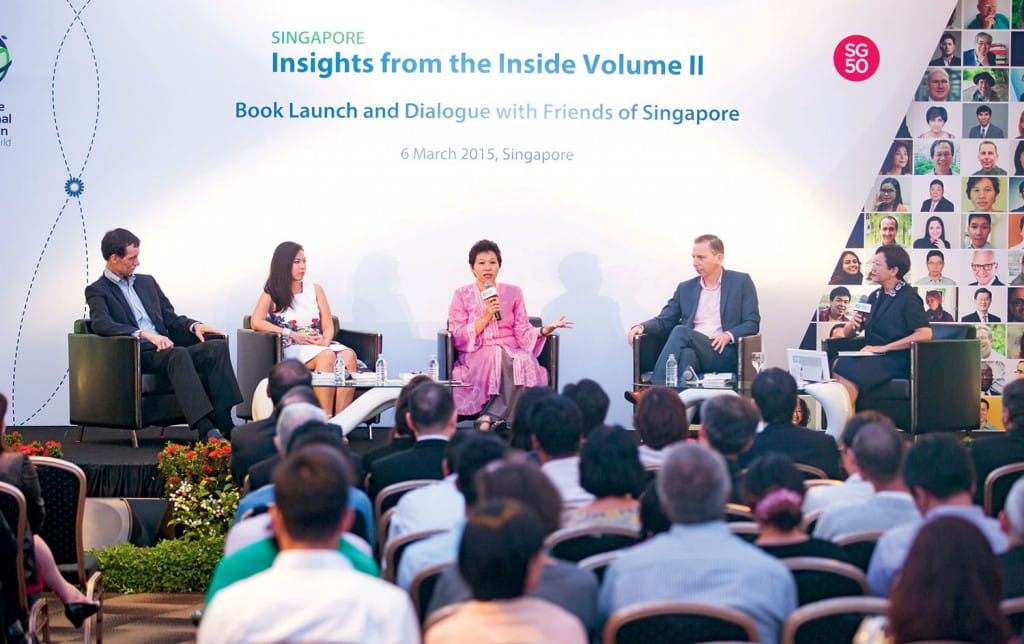
The launch centred around a dialogue between (from left) book editor Richard Hartung, and the bookʼs contributors Grace Sai, Deputy High Commissioner Kamsiah Kamaruddin and Andrew Mead, which was moderated by SIF Governor Jennifer Lewis (right).
What makes Singapore tick? What is it like to live in Singapore? How is Singapore a globalised city? 50 Friends of Singapore share their thoughts on their experiences about Singapore in the book Singapore: Insights from the Inside – Volume II to mark Singapore’s 50th year of independence.
ILLUSTRATIONS KEN LEE
or Singapore’s Golden Jubilee, the Singapore International Foundation (SIF) invited 50 members of the international community, representing 20 nationalities, to share their experiences visiting, working or studying here.
The result is a special collection of personal essays from academics, health-care professionals, diplomats, leading business people, social entrepreneurs, artists and students capturing their impressions of the head, heart and soul of Singapore.
The stories within contain both well-meaning advice and candid criticism from our loving critics and critical lovers, and offer us much food for thought as Singapore reflects on the past and ponders the question: What’s next, Singapore? For Singaporeans, the stories shed light on who we are as a people and bring lesser-known facets about our country to the fore.
Speaking at the book launch on March 6 in the Flower Field Hall at Gardens by the Bay, SIF’s executive director Jean Tan said: “Singapore’s 50th anniversary presents an opportunity for both celebration and reflection. These insights into Singapore’s head, heart and soul and the exchange of perspectives are a timely contribution from our friends to inspire dialogue on the way forward as Singapore looks ahead to its next 50 years. We are privileged to have our FOS partner us in this latest edition of Singapore: Insights from the Inside, to bridge communities and build greater understanding across cultures.”
More than 100 FOS and Singaporeans attended the book launch. Among them were three of the book’s contributors – Malaysian diplomat Kamsiah Kamaruddin, British architect Andrew Mead and Malaysian social innovator Grace Sai – and the book’s editor, American writer and consultant Richard Hartung. Together with the guests, they exchanged insights on Singapore and how the country could be holistically shaped to become a major contributor to collective efforts in building a better world.
Education Minister and SG50 Steering Committee Chairman Heng Swee Keat, who spoke at the event, called the book an important gift to Singapore. He added: “The progress of Singapore is also a story of the contributions that our friends around the world have made to Singapore, working together with us.”
SIF will continue the conversations in a series of talks with communities in Jakarta, Kuala Lumpur, London, and Washington DC this year.
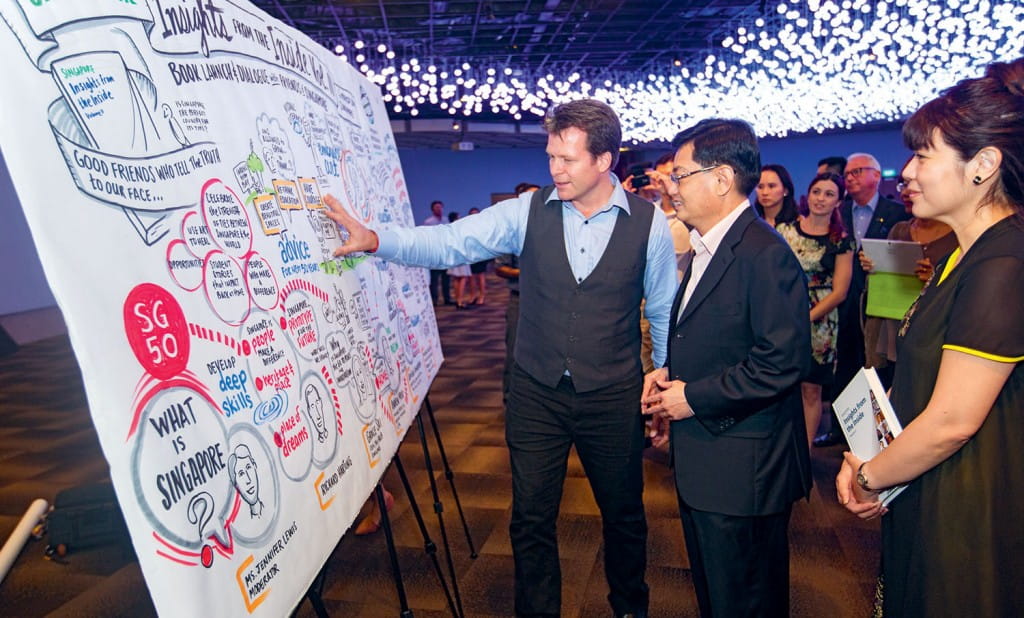
Education Minister Heng Swee Keat (centre) and SIF Executive Director Jean Tan (right) view the visual summary of insights shared during the launch.
SINGAPORE – “CAN, CAN”
Through my job with the British Council, I have been lucky enough to live and work in a wide range of countries and contexts. To say we are an international family is an understatement.
My wife is from Ecuador, my son was born in Colombia, my daughter in Portugal, I am from the United Kingdom, and the dog is from Korea! Apart from all the great memories and experiences, one of the things that we seem to do is take a word or a phrase from most places we have been, and it takes its place in the family vocabulary. If someone falls over and hurts themselves, then they get a buba (Romanian for bruise). From Portugal we took torradas (toast).
If I am driving and getting instructions from backseat drivers, I am inevitably told we need to go 왼쪽 or 오른쪽 (wen-jjok or orun-jjok, left and right in Korean).
We have a few words from Quechua (the language of the indigenous people of Ecuador), such as carishina (someone who doesn’t know how to cook, usually directed at me!).
So what did we bring from Singapore? The word that we have taken from Singapore for the Howard vocabulary, and which reminds us of our time, is the very simple “can, can”, in place of “yes, definitely”.
And I think that “can, can” is a particularly apt word to take back from a place like Singapore. Since moving back to Europe (we are now in Madrid), we have appreciated even more the sense of “can, can” from Singapore.
An early experience in Madrid was trying to buy a sofa and being told that it would take 40 days to deliver. Imagine that in Singapore! Singapore, of all the places I have lived, embodies a sense of “can, can”. Build a garden city, “can, can”. A university in the top 30 in the world, “can, can”. Have the first night-time F1 race, “can, can”.
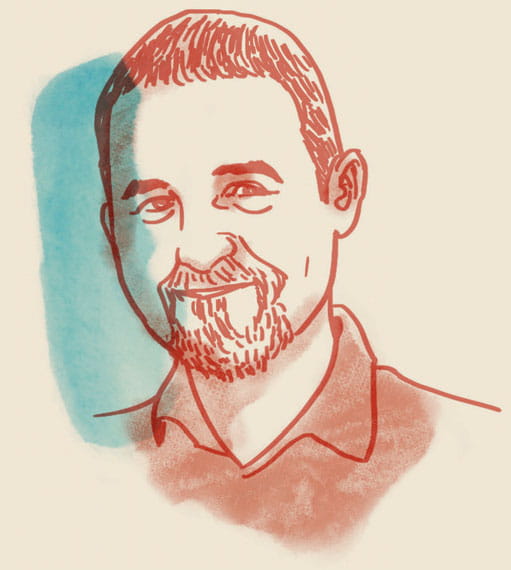 Mark Howard lived in Singapore from 2009 until 2013 and was Director of the British Council. He is currently the head of teaching for the British Council global teaching network and lives in Madrid with his wife, daughter and son.
Mark Howard lived in Singapore from 2009 until 2013 and was Director of the British Council. He is currently the head of teaching for the British Council global teaching network and lives in Madrid with his wife, daughter and son.
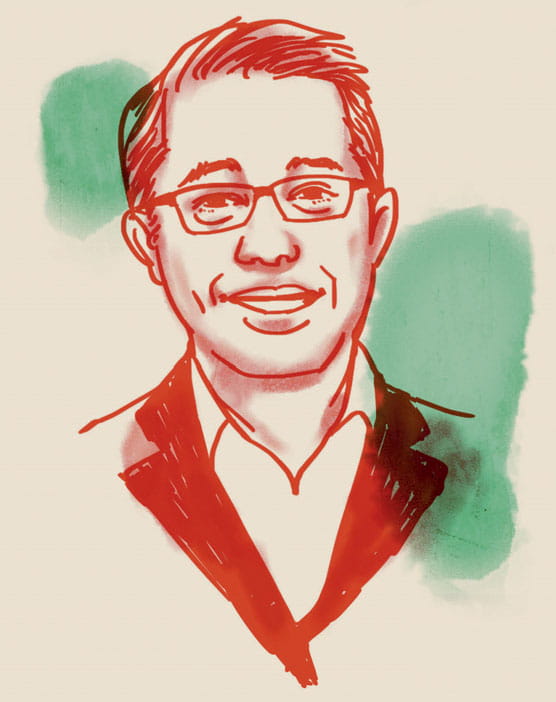 Ridwan Kamil is Mayor of the City of Bandung, Indonesia. He holds a masterʼs degree in Urban Design from the University of California, Berkeley, and studied architectural engineering at the Institute of Technology Bandung, where he was made a Singapore International Foundation-ASEAN Fellow in 1994.
Ridwan Kamil is Mayor of the City of Bandung, Indonesia. He holds a masterʼs degree in Urban Design from the University of California, Berkeley, and studied architectural engineering at the Institute of Technology Bandung, where he was made a Singapore International Foundation-ASEAN Fellow in 1994.
MY RELATIONSHIP WITH SINGAPORE
Singapore and have been in a relationship for more than 20 years.
We first met in 1994, when I was an undergraduate. I had been selected as a Singapore International Foundation-ASEAN Fellowship scholar, and my stint as an exchange student at the National University of Singapore (NUS) was the first time I had ventured out of Indonesia. Singapore was unlike anything I had experienced before – a new way of life, another culture different from my own. It was my first taste of the world beyond my home.
My lessons in Singapore did not just come from the semester of study at NUS or the introductory programme by SIF, which was comprehensive and which introduced me and the other SIF-ASEAN scholars to Singapore’s policies, strategies and way of life.
Everything I encountered in Singapore and the people I interacted with on a daily basis were learning experiences to me. I think my greatest takeaways were Singapore’s systematic and well-organised urban design and its innovative use of technology.
In hindsight, I think this first encounter with Singapore helped ready me for my professional and political careers by broadening my perspectives and preparing me to learn from and collaborate with communities in the more than 150 cities I’ve worked in and visited over the subsequent years.

GROWING A BUSINESS AND A FAMILY IN SINGAPORE
My relationship with Singapore began in the early 1990s during a “visa run” from Tokyo, where I was then living. At that time one could still easily get a ticket for jay-walking, traffic always flowed smoothly, Suntec City was a construction site, Robertson Quay was a backwater with godowns, Changi Airport Terminal 2 had just opened and Marina Bay was a lovely, open plot of land dotted with trees and migrating birds.
Watching the head-long rush to modernity has been nothing short of breath-taking. The result of long-term vision and a strong government with plenty of cash in the bank, Singapore has moved forward at a blistering pace. Now, global business and political leaders come to marvel at the changes and attempt to mimic the model that has shown such extraordinary results.
For those of us who live here, we see beyond the obvious to a complex and complicated Singapore batik.
My wife Kat and I were married on the beach at Sentosa in 2006. Now we explain to our five and eight year-olds (both born at Mount Elizabeth Hospital and attending local school) what it means to be a citizen of Singapore and how to respect and understand people and their culture and religion.
I think they’re starting to get it – largely because Singapore is a living, breathing model of those ideals. It’s not yet a perfect model – and there are elements of life here that both Singaporeans and foreign residents would like to change – but I believe it’s on the right track.
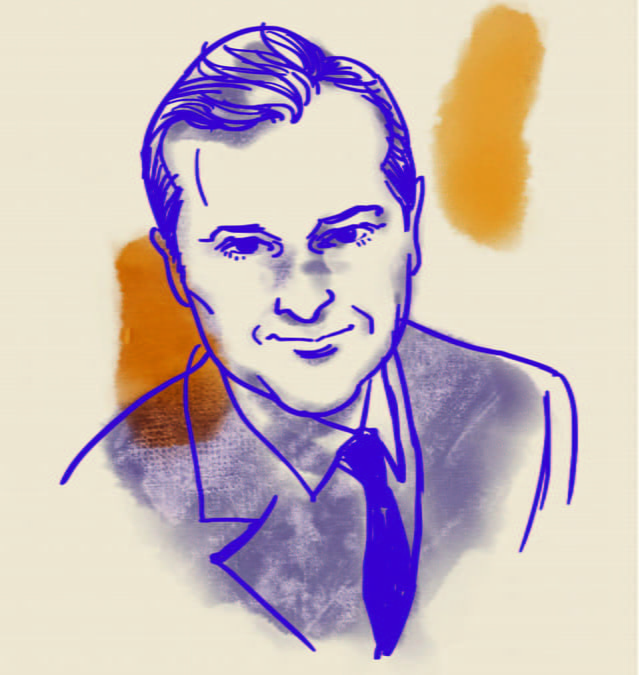 Hired by CNBC Asia, Glenn van Zutphen arrived in Singapore in 2004. A mere 12 months later, he and a group of co-workers were laid off when the network cut costs and people. That tragedy turned to triumph when Glenn started his media consultancy, VanMedia Group. Glenn is President of the American Association of Singapore.
Hired by CNBC Asia, Glenn van Zutphen arrived in Singapore in 2004. A mere 12 months later, he and a group of co-workers were laid off when the network cut costs and people. That tragedy turned to triumph when Glenn started his media consultancy, VanMedia Group. Glenn is President of the American Association of Singapore.
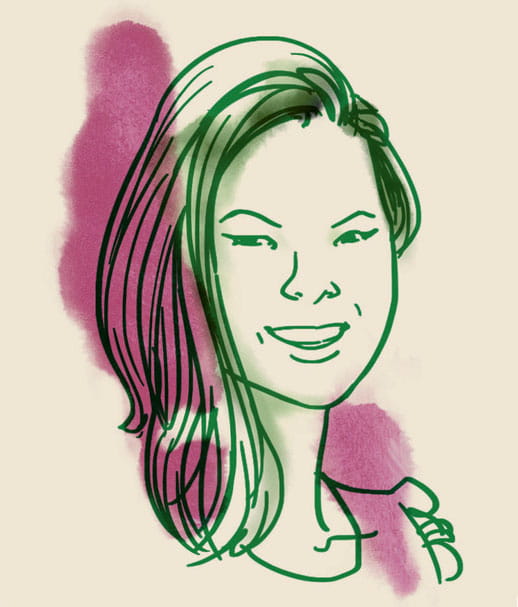 Grace Sai is the CEO and Co-Founder of The Hub Singapore and Head of Toniic LLC in Singapore, a global network of action-oriented impact investors. An ecosystem builder, she speaks widely on social entrepreneurship in Asia. She has an MBA from the University of Oxford and is a Skoll Scholar.
Grace Sai is the CEO and Co-Founder of The Hub Singapore and Head of Toniic LLC in Singapore, a global network of action-oriented impact investors. An ecosystem builder, she speaks widely on social entrepreneurship in Asia. She has an MBA from the University of Oxford and is a Skoll Scholar.
EMERGENT COMMUNITIES ARE CHANGING SINGAPORE
As a fresh university graduate in 2006, I had made a conscious decision to leave Singapore. While I did not know what I wanted as a career, I had a hunch that it was not to get a normal job, and that it would deviate from the country’s definition of success at that point in time.
After spending four years in San Francisco, Oxford and Jakarta though, I returned to Singapore in 2010 wanting to change it.
There were signs that Singapore was beginning to recognise that it had compromised a chunk of its soul in exchange for speedy progress and was changing for the better. Third-generation cafes were popping up, art shows and galleries were becoming the hype, and living in hippie neighbourhoods such as Tiong Bahru and Joo Chiat was the new “hot”.
I found this reversal refreshing, and betting on this spirit of bottom-up excitement and self-initiated communities, I decided to start the first Impact Hub in Asia, here in Singapore.
The Hub Singapore, part of a global network, is a co-working space and community for individuals and start-ups which use entrepreneurship and innovation to impact the world positively.
It is an inspiring and collaborative space, part incubator, part cafe and events platform, and has meeting rooms and a “siesta corner”.
Our community is about 60 per cent Singaporean and permanent residents, and 40 per cent are other people who have made Singapore home.
Most of them are young and energetic, while all of them are there to collaborate and use their entrepreneurial spirit for good.
It is a testament to an emergent and growing community, making it Singapore’s home for “change to go to work”.
DOWNLOAD THE E-BOOK SINGAPORE: INSIGHTS FROM THE INSIDE - VOLUME II FROM WWW.SIF.ORG.SG/SIFTI.
